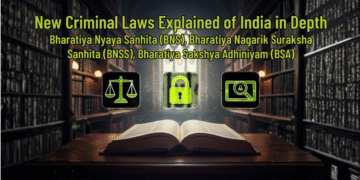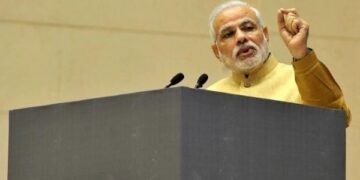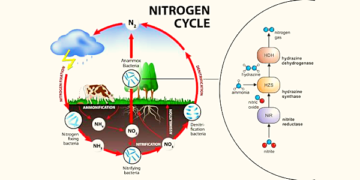In this post, we shall discuss inclusive growth or development, which is highly crucial to UPSC Civil Service Exam themes linked to government schemes to uplift all parts of Indian society. We’ll talk about what inclusive growth and development meaning, what it is, what its components are, what issues arising from it, and so on. Let’s get started.
What is the Meaning of Inclusive Growth?
Meaning of Inclusive Growth: “Inclusive Growth” refers to both the pace and pattern of growth, which are intertwined and must be addressed together.” — From the World Bank
- Inclusive growth is described as economic growth that creates jobs and reduces poverty.
- It comprises providing disadvantaged individuals with essential health and education services. It comprises ensuring that everyone has an equal chance at success, as well as empowering people via education and skill development.
- People must be able to contribute to & benefit from economic success in order to alleviate poverty fast and sustainably.
- To eradicate poverty, rapid growth is essential, but it must be broad-based across sectors and include a big share of the country’s workforce in order to be long-term sustainable.
- According to the United Nations Development Programme, inclusive growth is “the process and result of all groups of people engaging in and benefiting equally from growth.”
- According to the Organisation for Economic Co-operation and Development (OECD), inclusive growth is defined as economic growth that is evenly distributed across society and creates opportunities for all.
Click here to learn more about the other important UPSC topics before getting to the main topic. This subject, however, is important for the IAS exam. So let’s talk about what inclusive growth or development means, what it is, and the issues arising.
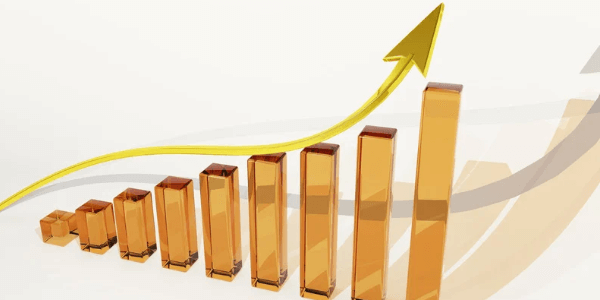
Elements of Inclusive Growth
Inclusive growth is a multi-faceted concept that promotes inclusion on a number of levels, including:
Skill Development
Employability and education of the working-age population, occupational health training, and skills will all contribute to the demographic dividend being maximized. The development of skills is critical in this situation. India faces two challenges in terms of skill development:
- There is a scarcity of highly skilled employees.
- Youths with conventional training are unemployed.
According to the Economic Survey 2017, nearly 30% of India’s youngsters are unemployed (Not in education, employment, or training).
Economic Development
India is 1 of the world’s most rapidly developing economies. However, due to both cyclical and structural challenges, the Indian economy is gradually faltering. India’s target of a $5 trillion GDP by 2024-25, on the other hand, can assist the government in eliminating inequality, expanding social spending, and creating jobs for everybody.
Inclusion of Finance
The process of providing vulnerable people with affordable access to financial services is known as financial inclusion. Financial inclusion is critical for inclusive growth because it encourages people to save, which starts a positive economic cycle.
Technological Progress
The fourth industrial revolution is soon approaching the planet. These technological advancements have the potential to lessen or aggravate inequality depending on how they are deployed.
The govt has taken many steps, such as the Digital India Mission, to make sure that those who are technologically proficient are able to make use of technology’s endless possibilities.
Technology can also help in the battle against other problems, such as:
- Agriculture: Agriculture is one of the most important industries in the world. From farmer to consumer, modern technology can assist increase the efficiency and competitiveness of an agro-value chain.
- Education: Innovative digital technologies that allow access to trainers and mentors while also supplying important data in real-time can be used to build new sorts of adaptive and peer learning.
- Health: Health-related technology has the potential to transform the delivery of public health services.
- Governance: Innovation has the capacity to eliminate government service delivery delays, corruption, and inefficiency.
- Manufacturing: Financing, procuring raw materials, securing property, and establishing relationships with the user market are all challenges that manufacturing technology can manage. Only cutting-edge technology allowed GST to be implemented.

Features of Inclusive Development
- Address the needs of those who are excluded or oppressed.
- Participation of people from different backgrounds in society
- Disparities in per capita income are being narrowed between:
- Various economic sectors
- Various segments of society
- Rural and Urban Environments
- Gender differences
- Discriminatory-free
- Ensure that people have access to fundamental infrastructure as well as essential services and capacities such as health and education. This access should cover not just the number but also the quality of these fundamental services.
- Poor and lagging socioeconomic groups, as well as lagging regions, should be considered partners in this growth.
- Increased poverty-reduction potential
Need for Inclusive Growth in India
- It is a difficult task in India to achieve inclusive growth. The majority of people in a democratic country like India reside in rural areas, and integrating them into society is a major concern. The Indian government faces a challenging task in spreading progress across the country and to all levels of society.
- Access to basic government services is severely limited.
- The public spending on core services continues to be a pitiful percentage of GDP (1–2%). Despite the fact that institutions have been built, their quality is uneven.
- Malnutrition and inadequate nutrition are common among society’s marginalized groups, particularly among adolescent girls.
- Economic and social imbalances exist both inside and across states. In lagging states, low growth rates and bad public services ensure that the gap widens. The Human Development Index & Per Capita Income across states represent the information.
- Low agricultural growth, low human development, low-quality employment growth, rural-urban divides, gender, socioeconomic inequities, and regional disparities, to name a few issues, are all issues that the country faces.
- Because of trade competitiveness, foreign direct investment, and new technology, skilled labor is highly demanded. Labor regulations frequently discriminate against formal employment and favor the ‘casualization’ of labor in some situations.
Inclusive Growth & Issues Arising
Unemployment:
- Unemployment against educated urban adolescents has risen dramatically, particularly since the Covid-19 outbreak.
- The majority of the workforce is working in non-unionized sectors with no social protection.
- The gig economy is now sweeping over the labor sector. Even if it gives people additional opportunities, it still lacks social security for the employed.
Poverty:
- According to a recent World Bank analysis, India’s extreme poverty decreased by 12.3 percent between 2011 and 2019.
- However, India still has a long way to go in terms of inclusive growth, as poverty is one of the causes and reasons for this.
- India was placed 66th out of 109 countries in the global multidimensional poverty index.
Backwardness in Agriculture:
- Agriculture employs almost 44 percent of Indians, although it only accounts for 16.5 percent of the country’s GDP, resulting in widespread poverty.
- The following are some of the challenges in agriculture:
- Land availability per capita is dwindling.
- A gradual decrease in the employment share
- Climate change, soil erosion, and water scarcity are all reducing agricultural productivity.
- Differences in growth between regions and crops
Regional Inequalities:
- In India, regional discrepancies are a key source of worry. Factors such as the wealth gap, the caste system & others contribute to regional disparities, resulting in a society in which certain groups have more privileges than others.
- The following are some of the issues with geographical disparities:
- Kerala is the state with the highest literacy rate., with 93.1 percent literacy, whereas Bihar’s literacy rate is merely 63.82 percent.
- In 2018, Goa’s per capita income was Rs 4,67,998
- While Bihar’s was just one-tenth of that, at Rs 43,822.
Social problems:
- Gender disparities, caste systems, and religious disparities are all stumbling blocks to inclusive growth.
- Malnutrition among youngsters is another concern that threatens the country’s future.
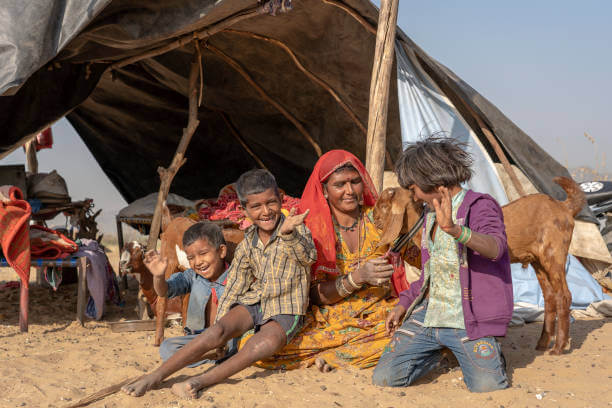
Indicators of inclusive growth
- Index of Inclusive Development (IDI):
- The World Economic Forum created the Inclusive Development Index (IDI) (WEF).
- The IDI has been founded on the premise that most people measure their country’s progress primarily on their standard of living rather than GDP.
- Growth & development, inclusion, and intergenerational equity and sustainability are the three characteristics used to calculate inequality.
- Social Progress Index (SPI):
- Basic human requirements, Foundations of well-being, and Opportunities are all included in this composite index of social and environmental indicators.
- Instead of focusing on the amount of money spent, the SPI measures the effects of government policies. It also considers how effectively government funds have been spent.
- It’s a lot bigger
- Global Slavery Index:
- The Walk Free Foundation of Australia is the publisher.
- In the modern period, slavery is defined as a situation in which one person takes away another’s freedom in order to control and abuse their body.
- The absence of rights, lack of physical safety, lack of access to needs such as health care, education, food, etc., and movement patterns are all factors that contribute to contemporary slavery.
Conclusion- Inclusive Growth
In this post, you’ll learn everything there is to know about Inclusive Growth or Development: Meaning and Issues, as well as the elements, significance, and more. This is a crucial topic for the UPSC exam. Keep a notebook in which you will write all important points and review them during the exam. For up-to-date UPSC and IAS exam information, go to the official website.

FAQ- Inclusive Growth
For inclusive growth, the NITI Aayog’s Strategy for New India has the following goals: To achieve 9-10 percent inclusive, clean, sustained, and organized rapid growth by 2022-23. In addition, we seek to employ technology to create equitable, sustainable, and participatory governance by 2022-23.
Economic growth that creates jobs & reduces poverty is referred to as inclusive growth. It relates to poor people having access to basic health and education services. It entails ensuring equitable opportunity for all people, as well as empowering them via education and training.
Over the previous 15 years, India has made incredible economic development, lifting more than 271 million out of poverty.
Editor’s Note | Inclusive Growth
Our essay will come to a close here. The above article has been updated to include information about Inclusive Growth. Furthermore, we have discussed the meaning of inclusive growth or development, what it is, inclusive growth issues that are arising from it, elements, features, and needs, and so on. Please read this material thoroughly before taking the UPSC test. Don’t forget to have a look at the rest of this website’s vital topics. Finally, best wishes.


